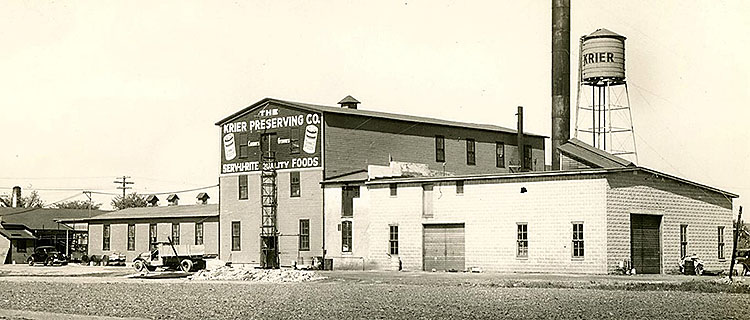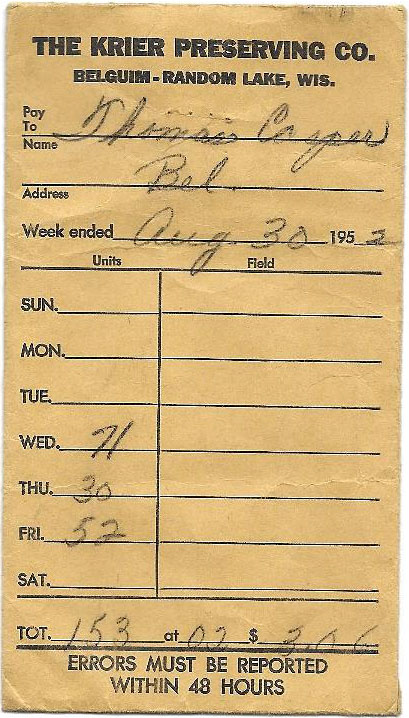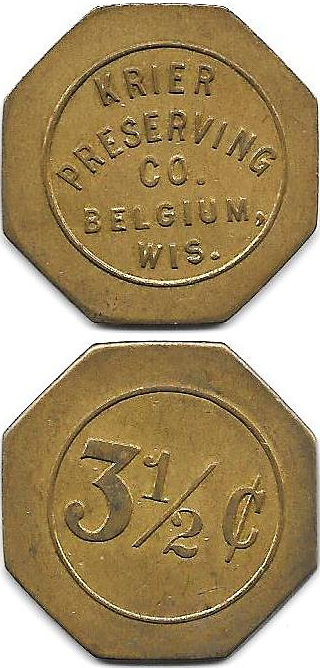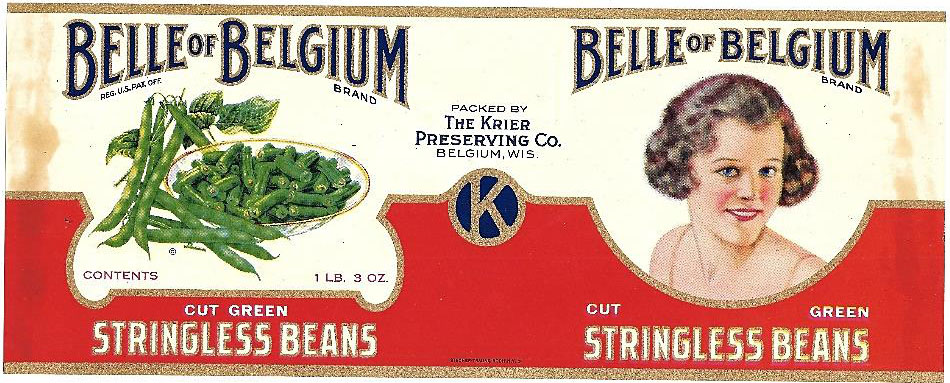
NOW Articles Written By Members
Bullion And Coin Tax Exemption – Act Now!
Is There A Twenty Cent Piece We Can Add To A Collection
Capped Bust Half Dollars: A Numismatic Legacy
U.S. Innovation Dollars: Our Most Under-Collected Coin?
My 2023 ANA Summer Seminar Adventure
In defense of the American Women's Quarters
A look back in numismatic history – the Hicksville Silver Dollar Hoard
The proofs so few of us collect: Jefferson Nickels
A look back in numismatic history – a story too good to be true
Kilroy promotes war bond sales
Just passing through a short-lived bank
The Kewaunee Line Encased Coin Folder
Lyman C. Draper: Collector, Historian, Genealogist
>> More articles in the Archive
For more NOW Articles Written By Members,
<< More articles in the Archive
Picking Produce For Profit
[By Tom Casper #9827]
Canning is one of Wisconsin’s most important industries. The factories dot the landscape of small towns near the fields where the produce is grown. Beans, tomatoes, corn, beets, carrots, peas, potatoes and more are locally grown, picked and trucked to these processing plants.
You probably wonder how a boy from a large city is familiar with canning companies in the rural areas of Wisconsin. This is how it occurred. As a youth, I was very close with my first cousin who lived in Belgium, WI, which is about 30 miles north of Milwaukee. Each year I would spend one week with him to experience the small-town charm and one week he would come by me to enjoy the big city life of Milwaukee.
Belgium, mostly a Luxembourg community, had two main employers. One was Allen-Edmonds Shoe Company (now located in Port Washington, WI) where my uncle worked. The other company was the Krier Preserving Company.

In August, 1952, at the age of nine, I went to Belgium for a week in the country. My cousin told me in summer all the kids in town worked for Krier’s for their summer job. He invited me to join him picking in the fields. He said all I needed was a 5-gallon bucket, a lunch and a strong back. I took him up on the offer as there were no jobs in Milwaukee for a 9-year-old.
The workday started early in the morning. We went to a designated street corner and were met by other kids eager to work. An open truck pulled up and we were loaded in the back. We bounced around in the back of the truck on country roads until we came to a nearby field where there were long, long rows of bean plants. It always seemed to be bean season when I was there. At the start, everyone received a cotton bag and down the row we went as fast as we could go.


Krier Preserving Co. pay token.
Brass. Actual size: 27mm
We filled our pail, then emptied it into the gunny sack. When it got full, the field boss came over, tied the bag closed and weighed it with a hand scale. The boss then punched our day card with that weight. The cards were turned in at the end of the day. The more you picked, the more you earned. The going pay for beans was 2c a pound. That rate remained the same even in subsequent years. Over three days that week, I picked 153 pounds of beans earning $3.06. At the end of the week we were given a pay envelope bearing our name.
Numerous canneries in Wisconsin issued metal trade tokens in the past to pay pickers or cannery workers. The Krier Preserving Co. issued one such token. It is octagonal, brass, 27mm and was good for 3 1/2c, an unusual denomination. In an article, from the June, 1971 issue of the TAMS Journal, written by Robert E. Gantner, he stated these tokens were used from 1918-1925. The tokens were used in the cannery to pay workers for removing husks from a bushel of corn or for a container of cabbage that had been chopped for sauerkraut.
In the late 1950’s mechanical harvesting was developed replacing hand picking. The Krier Preserving Co. was founded in 1913 by J.B. Krier. Their products were marketed under the names “Krier’s Best”, “Belle of Belgium”, “Serve-U-Rite” and “Sunbonnet”. The company name was changed to Krier Foods, Inc. in 1982. In 1988 they sold the canning plants in Belgium and Random Lake to Lakeside Foods which continues to operate.
The Krier token in my collection rekindles my memories of the hot, dirty, dusty, and back-breaking job of bean picking which we didn’t mind at all as kids.

"Belle of Belgium" green bean label
Have an interesting numismatic topic you’d like to share with your fellow NOW members?
Send your article to evan.pretzer@protonmail.com today!!!